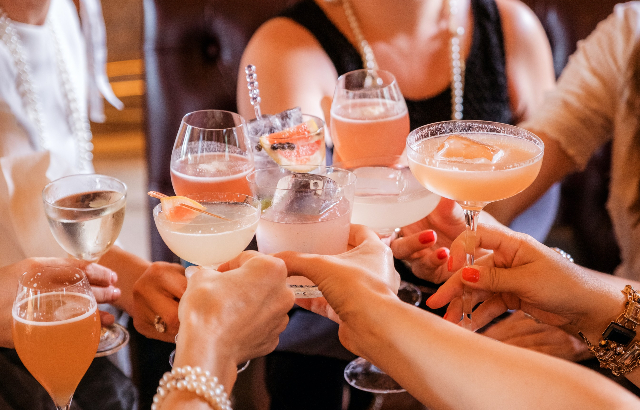Spirits volumes drop 7.6% in global on-trade
Global on-trade spirits volumes declined by 7.6% in the year to January 2024 as consumers cut their alcohol consumption.

A CGA by NIQ webinar, called ‘How to win in the On-premise’, explored shifts in category consumption, as well as changing occasions and the impact of cost pressures.
Charlie Mitchell, head of insights and consumer research at CGA by NielsenIQ, noted that while visitor frequency to bars and pubs is “stable and strong and set to increase”, consumer behaviour has changed on these visits to the on-trade.
“More consumers are telling us they’re drinking less alcohol than telling us they’re drinking more alcohol – that’s driven predominantly by older consumers and by less frequent visitors to the sector. Even when we look at the core drinker and the younger consumer, they’re also telling us they’re limiting or moderating their alcohol consumption.”
Citing its global on-premise CGA OPM tool, spirits volumes fell by 7.6% in the year ending January 2024, while beer, flavoured malt beverages (FMB) and cider dropped by 4%.
By value, spirits suffered a 3.4% decrease while beer, FMB and cider rose slightly by 0.4%.
Regarding the decline for spirits, Mitchell noted the impact of premiumisation and inflation.
Cognac, rum and gin plummets
By category, brandy and Cognac collectively saw the biggest volume and value drop in the 12 months to January 2024, falling by 11.2% and 5.9% respectively.
Over the same period, rum saw a 10% volume decline and 5.3% value decrease, while gin fell by 9.2% in volume and by 4.9% in value.
Whisky reported a 8.4% volume drop and a 3.8% value decrease.
Meanwhile, vodka saw a 7.7% fall in volume and 3.7% drop in value. ‘Other spirits’, which includes liqueurs, fell by 6.3% in volume and dipped by 1.7% in value.
Tequila saw a 4.9% volume fall and a 1.9% value drop.
“Globally, a lot of the declines are driven by the likes of rum, brandy and Cognac in the US,” Mitchell explained. “Interestingly for gin, what we see is a steep decline in markets like the UK and the US as well. In Europe, some of that is reversed – we still see pockets of growth for gin.
“What’s consistent globally is that Tequila and other spirits, such as liqueurs, are far outperforming the overall spirits category.”
The CGA Global Reach survey asked consumers why they were drinking less alcohol than a year ago, with 68% citing lifestyle/health-related reasons, 61% stating it was due to moderation and 50% noting financial/cost-of-living related reasons.
CGA noted that ‘despite an anticipated rebound due to inflationary cost pressures easing, [alcohol] volumes will likely not fully recover’.
“The on-premise is a driver for sustainable brand volumes,” said George Argyropoulos, client solutions director – EMEA CGA by NielsenIQ, who noted that the channel remains important for brands to invest in over the long term.
Move to ‘low-tempo’ occasions
Mitchell also noted a movement in every region of consumers choosing to drink and eat earlier in the day. “Eating and drinking occasions are starting to merge,” he added, as consumers seek out experiences.
“That early-evening daypart has fierce competition. When we look at the footprints of various categories when it comes to on-premise consumption, we can see that for spirits and cocktails in particular the heartland has traditionally been around late-evening and late-night occasions,” said Mitchell.
“As those occasions shift to earlier dayparts, they’re starting to move into the territory of beer and wine. Therefore, those occasions and drink choices are becoming increasingly competitive. It’s a share game and the way to win in the on-premise is by winning share and stealing share from other categories.”
Covid-19 was a “big disruptor of the on-premise”, said Argyropoulos. He explained that on-trade occasions are shifting to “lower tempo and earlier dayparts”, with food playing an important element in experiences.
On-premise pricing has also risen far quicker than in the off-premise, Mitchell added, noting that some consumers are “questioning whether they are getting great value for experience and great value for money when they’re paying for those drinks in the on-premise”.
More than half of consumers (57%) come into the on-trade to try new drinks before committing to purchase online or in retail stores, says Mitchell. This is especially true for luxury or high-end spirits.
The on-premise also drove 82% of sales for the top 10 new product developments across long alcoholic drinks and spirits in Great Britain since 2021.
Mitchell noted matcha as a trend that’s “taking over the world” with it being seen in confectionary, coffee and hot beverages. “We don’t think it will be too long for serves to start to penetrate the on-trade globally.”
Mitchell also noted that the “Asian influence” is starting to move into other markets, citing the launch of Suntory’s -196 ready-to-drink brand in Australia and the UK.
In a survey of Australian drinkers, CGA found that consumers are seeking cocktails, hard seltzers and pre-mixed spirits and mixers on draft, particularly in hotels and nightclubs.
“This is potentially an opportunity for spirits and other categories to fight back in beer’s heartlands of draft line-ups,” Mitchell added.
Volume sales of spirits in Australia’s on-trade fell by 8.1% in the year to 26 March 2024, driven by a decline for gin.
Related news
The Radicle brings $10 cocktails to Chicago
